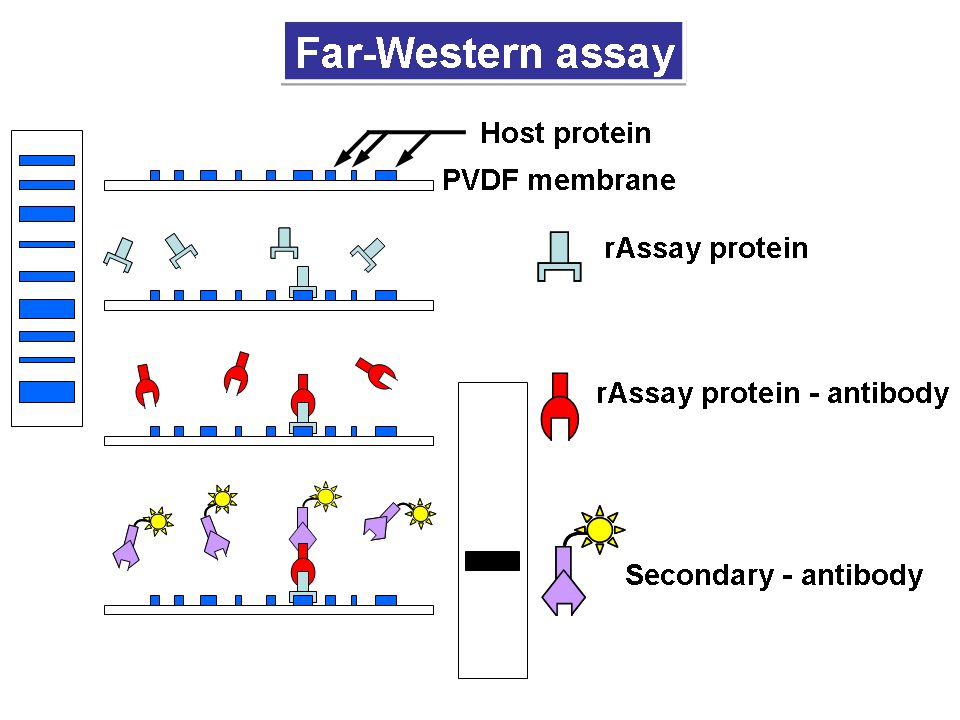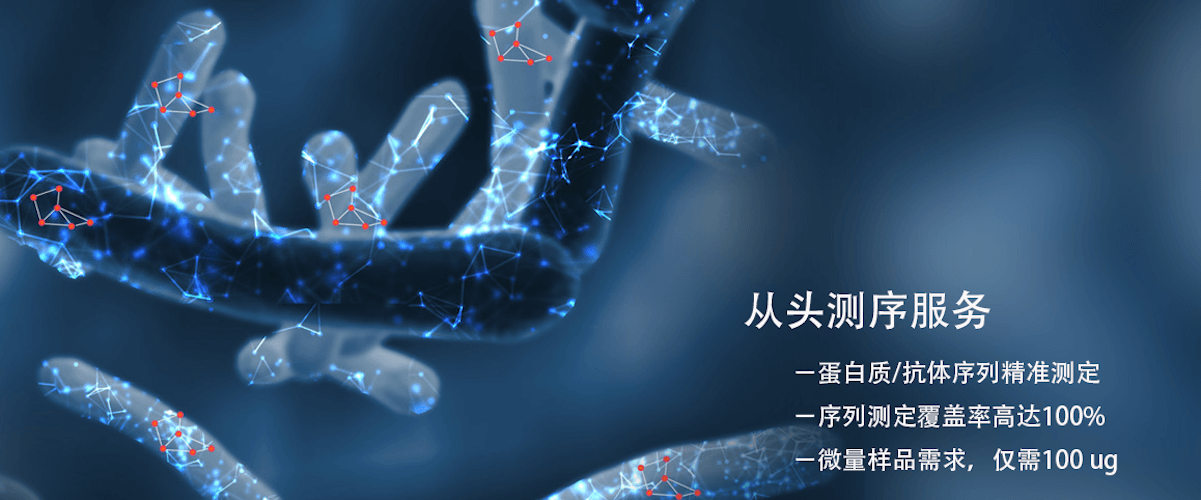Far-Western Blot Analysis
The Far-Western Blot is a molecular biology method based on Western Blot technology, used to detect protein-protein interactions in vitro, especially those interactions that do not require the native structure of the target protein.
The overall workflow of the Far-Western Blot technique is similar to that of the Western Blot, except that in Western Blot, antibodies are needed to detect the target protein, whereas in Far-Western Blot analysis, antibodies are not required. Instead, purified and labeled 'bait' proteins are used to probe and detect the target protein on the membrane. In both Western Blot and Far-Western Blot, proteins are separated by SDS-PAGE and native PAGE gels and then transferred from the gel to a membrane. After transfer, the membrane is blocked with BSA. The proteins on the membrane are denatured and renatured, followed by subsequent detection steps. In Far-Western Blot, the membrane is probed with a commercially available highly purified bait protein. After the bait protein reacts with the target protein, bands corresponding to the target protein can be detected based on the bait protein used.
To identify proteins interacting with a given protein, Far-Western Blot is an effective platform with low experimental cost and high sensitivity. The principle of Far-Western Blotting is an improvement over Western Blotting, using naturally folded recombinant proteins as the first probe to interact with proteins transferred onto a PVDF membrane. The second probe used in Far-Western Blot is a specific antibody against the given protein, and the third enzyme-labeled probe is an antibody against the second probe. When combined with LC-MS-MS protein identification, the resulting protein spots (or protein bands) can be characterized, followed by further functional analysis such as protein immunoprecipitation.
During Far-Western Blot analysis, when it is necessary to preserve the native conformation and natural interactions of proteins, the following issues should be considered: 1) Proteins separated under denaturing conditions in SDS-PAGE may be denatured, and denatured proteins may not react with the bait protein, making it unable to recognize the interaction. 2) Denaturing and renaturing proteins before binding may also lead to conformational changes, affecting the binding of target proteins to bait proteins. 3) If the binding site is affected by other factors, losing the ability to bind to the bait protein, the bait protein may not react, leading to interaction detection failure. More challenging is that proteins presented in non-native conformations may interact in new non-native ways, resulting in false positives.
Biotech company Baite provides Far-Western Blot analysis services, which can be customized according to your needs and evaluate potential factors that may affect the results. We promise that the data provided is reliable and has high reproducibility.

Far-Western Blot analysis
Advantages of Far-Western Blot analysis
• Can be used for in vitro protein interaction studies
• Analyze binding domains of proteins
• Compare protein binding affinities
• No need for specific antibodies
Workflow of Far-Western Blot analysis
1. Quantify proteins and separate by SDS or native PAGE
2. Transfer proteins from gel to membrane
3. Denature and renature proteins to ensure binding sites on the membrane are fully exposed
4. Block the membrane with BSA buffer
5. Incubate the membrane with purified bait protein
6. Detect bait protein signals
7. Image analysis and report delivery
Related services
Protein interaction analysis
Protein interaction mass spectrometry analysis
Protein interaction analysis using co-immunoprecipitation (CO-IP) combined with mass spectrometry
Protein interaction analysis using GST-fusion protein pull-down technology combined with mass spectrometry
Protein interaction analysis using SILAC combined with co-immunoprecipitation and mass spectrometry
Cross-linking protein interaction analysis
Label transfer protein interaction analysis
Pull-down target protein mass spectrometry identification
How to order?





